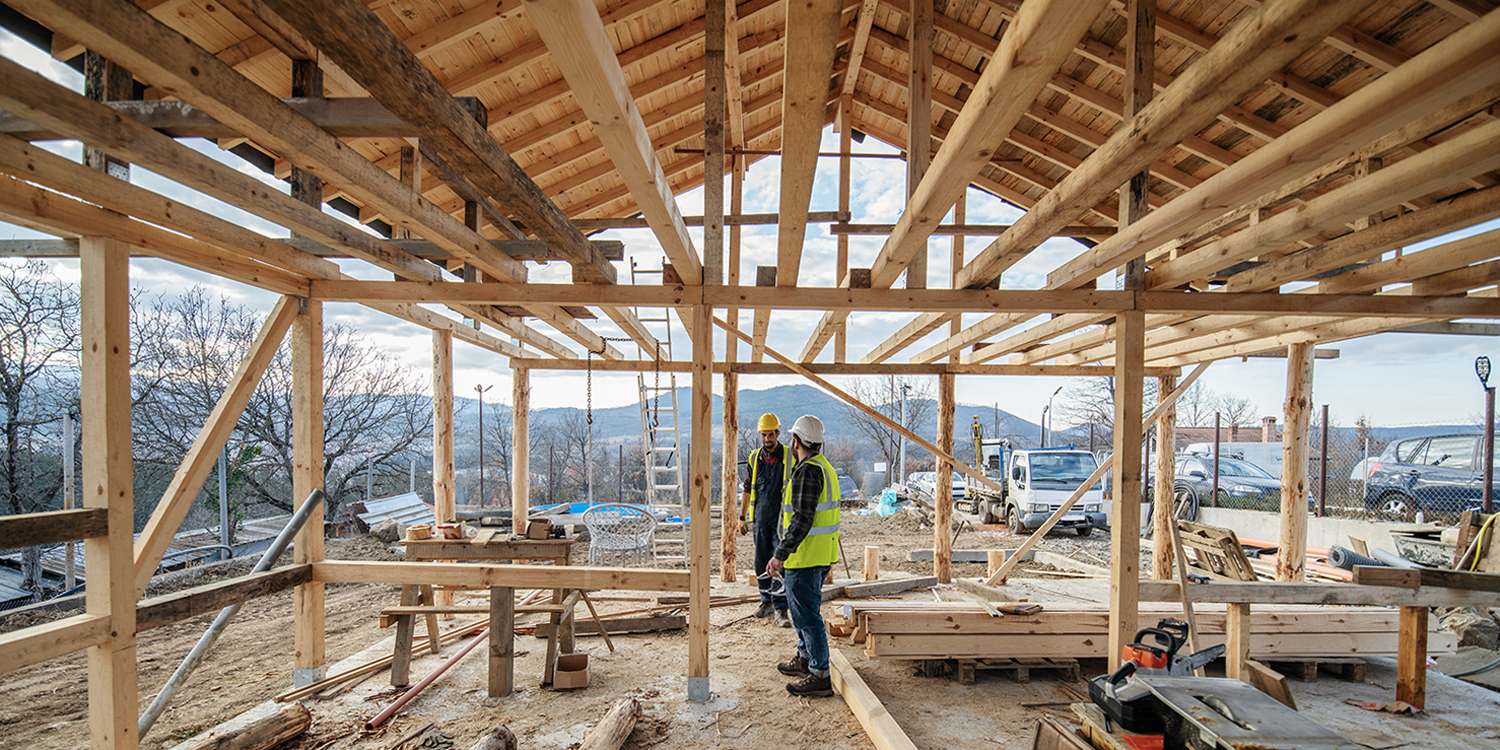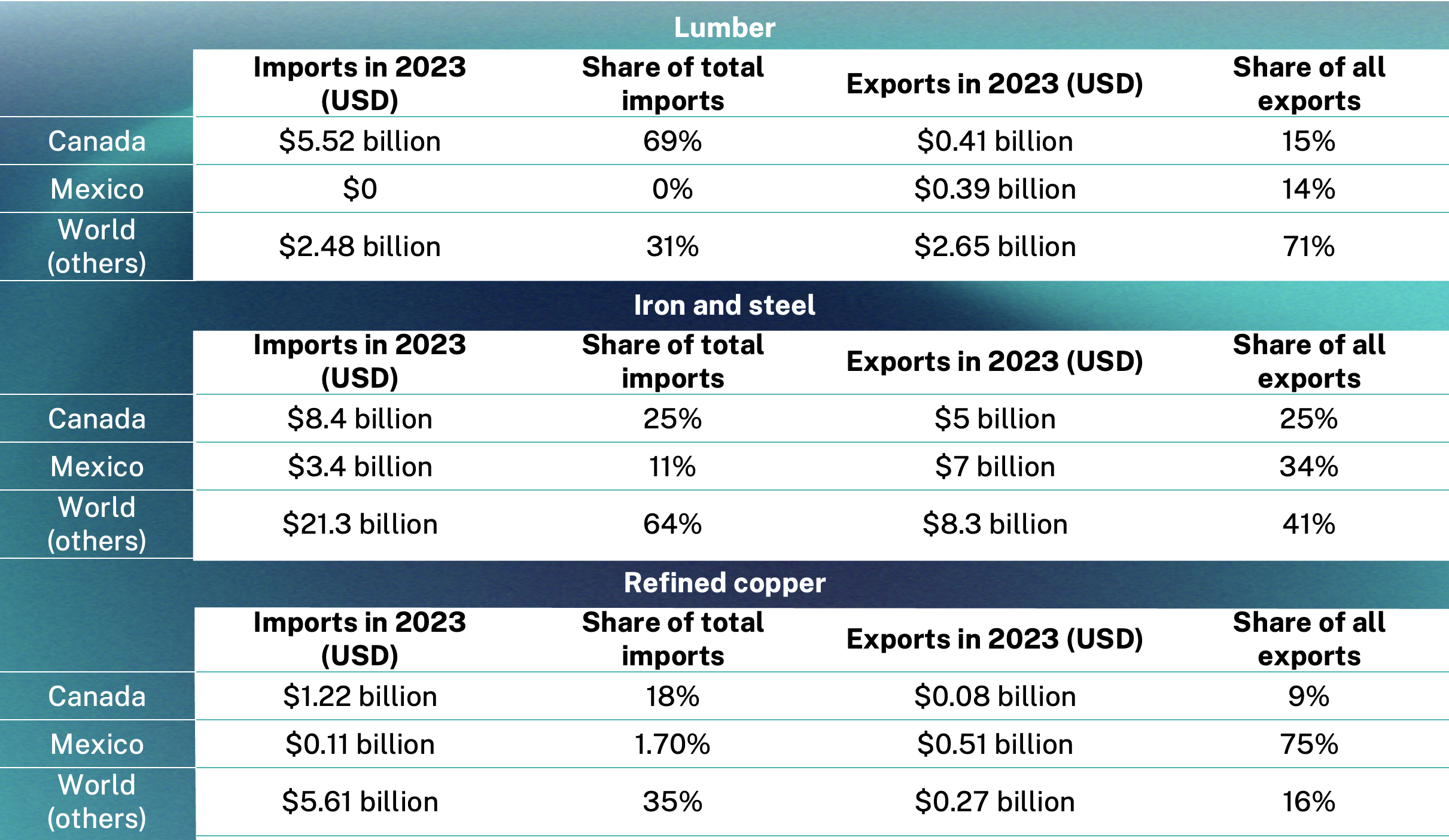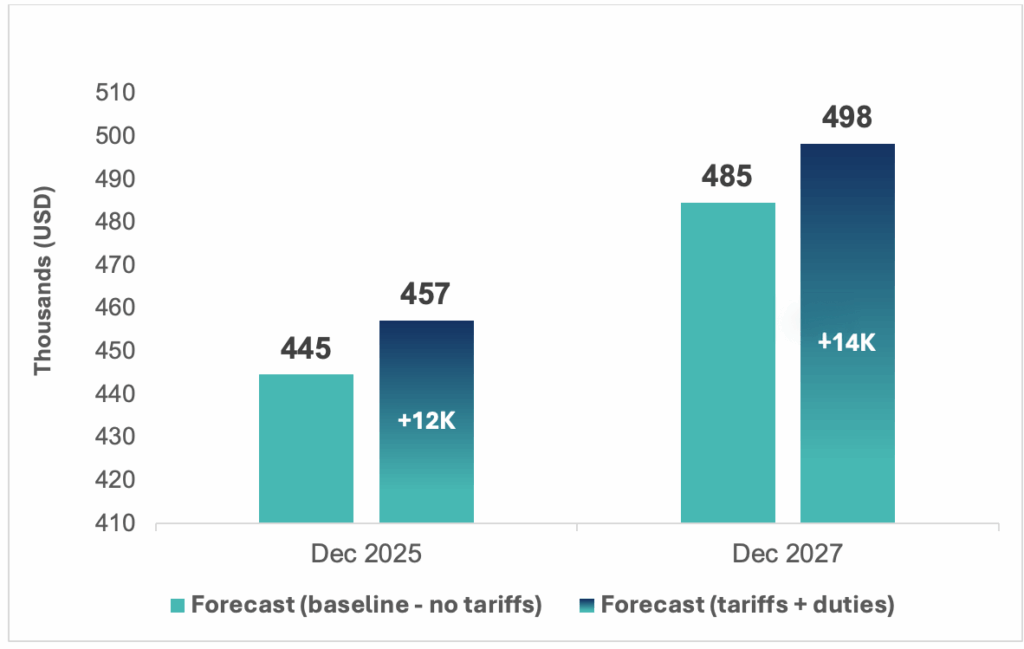Blog /
Building Trouble: How U.S. Tariffs on Canadian Construction Materials Are Pricing Out the American Dream
As policymakers in Washington revisit tariffs and trade barriers, they may want to take a closer look at what those measures are doing at home — particularly to America’s housing affordability crisis.

As policymakers in Washington revisit tariffs and trade barriers, they may want to take a closer look at what those measures are doing at home — particularly to America’s housing affordability crisis.
Canada is a vital supplier of key construction materials to the United States. In 2023 alone, Canada accounted for:
- 69% of U.S. lumber imports.
- 25% of imported iron and steel.
- 18% of refined copper imports.
These aren’t niche goods — they’re essential inputs for every new home, apartment complex and renovation project across the country.

Note: All dollar values presented in this document are in current U.S. dollars (USD).
Source: BDL analysis. U.S. Census Bureau, Foreign Trade.
The Cost of Protectionism: Up to $20,000 per Home by 2027
Our new analysis finds that, between 2018 and 2024, tariffs and duties on foreign construction materials have already added up to $6,000 USD to the cost of building a single family home in the U.S. If current measures remain in place, that figure could climb another $14,000 by the end of 2027.
At a time when housing affordability is already under intense pressure, such a significant jump could prevent many Americans from buying. According to the National Association of Home Builders, each $1,000 increase in the median price of a new home can exclude approximately 116,000 prospective buyers. By that measure, the projected $14,000 in additional costs from tariffs and duties could price out more than 1.4 million would-be homebuyers over the next two years.[1]
Tariffs and duties add $6K to U.S. homebuilding costs — with 4.5% of the $134K surge occurring between 2018–2024

Notes: Index = December 2014.
Sources: BDL analysis. Macrobond: HPI – FHFA U.S. Residential Real Estate Price Index (Purchase-Only, National Total, Seasonally Adjusted); IRC – BLS, PPI Commodity Data (Inputs to Residential Construction, Goods Less Foods & Energy, Seasonally Adjusted).
Forecast of building costs for average U.S. single family home

Notes: BDL forecasted the FHFA Purchase-Only House-Price Index (HPI) and builders’ sticks-and-bricks costs for Jun-2025 → Dec-2027 with a seven-variable VAR(4) estimated on monthly Δ-logs of HPI, the BLS Inputs-to-Residential-Construction index (IRC), steel, aluminium and lumber PPIs, the 30-year mortgage rate and real disposable income over Dec-2014–Dec-2024. (See Methodology).
Tariffs and Duties: More Fuel on a Big Fire
While tariffs account for a relatively small share of overall cost increases (under 4.5% of total construction budgets), they’ve amplified broader market disruptions. Pandemic-era material shortages, especially for lumber and metals, collided with rising global demand and tariff-driven price shocks.
Between 2018 and 2024:
- Home prices jumped 75%
- Construction input costs surged 45%
Regions with heavy reliance on imported materials — including fast-growing states like Texas, Florida and California — have likely felt these shocks most acutely.
And the timing of tariffs couldn’t be worse. Since 2020, home prices have surged by 30% nationwide, driven by inflation, supply chain challenges and tight supply–demand conditions. The average U.S. home now costs over $510,000, while the median renovation cost has jumped 60% in just three years.[2] With family income gains growing slower than home prices — particularly in the Northeast and West — American households are feeling the financial squeeze.[3]

Sources: BDL analysis. U.S. Census Bureau and U.S. Department of Housing and Urban Development, Survey of Construction.
Builders, developers and even U.S. manufacturers that depend on Canadian inputs are facing rising costs, tighter margins and disrupted timelines. To be clear, these costs are not evenly distributed. Regions reliant on imported materials will bear the brunt of these inflationary effects. As supply chains adjust, the pain may linger longer than policymakers anticipate.
A Policy Risk Hiding in Plain Sight
Policymakers often frame trade restrictions in geopolitical terms, but the downstream impact on U.S. households is immediate and material. While Canadian exporters may be the ones targeted, American builders and buyers are absorbing the costs. If affordability is a U.S. priority, this should be a red flag.
Key Takeaway
Canada and the U.S. have built one of the world’s most integrated construction economies. Trade policies that treat Canadian producers and materials as threats rather than trusted supply partners would be counterproductive — especially now.
Trade should build our economies, not price people out of the American Dream.
Methodology
To estimate the impact of tariffs and duties on U.S. housing costs, the Business Data Lab built a stress-test model based on a seven-variable economic system (vector-autoregression). The model used monthly data from 2014–2024, including key indicators like house prices, steel, aluminum, copper and lumber costs, construction input prices, mortgage rates, and household income.
We applied two simulated shocks to the model to reflect the impact of new trade measures. Beginning in June 2025, we imposed a 12.5% increase in steel prices and a 25% jump in aluminum prices, based on a 50% tariff and assuming import shares as well as a full price pass-through. Starting in October 2025, we layered in a 7.2% increase in softwood lumber prices, reflecting a newly announced 34.5% duty rate from March 2025 and factoring in import shares and full pass-through. To capture broader economic conditions, we also included a modest drag on demand: A 0.5% rise in mortgage rates and a 0.3% monthly decline in real incomes.
The model compared a “baseline” scenario with a “tariff shock” scenario through to the end of 2027. The difference between them shows how much tariffs could push up home prices and construction costs — expressed in current USD terms.
Detailed Description
The Business Data Lab forecasted the FHFA Purchase-Only House-Price Index (HPI) and builders’ sticks-and-bricks costs for June 2025–December 2027 with a seven-variable VAR(4) estimated on monthly Δ-logs of HPI, the BLS Inputs-to-Residential-Construction index (IRC), steel, aluminium and lumber PPIs, the 30-year mortgage rate and real disposable income from December 2014–December 2024. The baseline is a straight dynamic forecast; the tariff scenario injects supply shocks of +12.5% to steel PPI and +25% to aluminium PPI from June 2025 (50% duty × import shares of 25% and 50%), plus a +7.2% lumber PPI shock from October 2025 (20% duty × 36% import share). Metals (4% of IRC, 65/35 steel-to-aluminium) raise the composite cost level 2%; the lumber duty adds a further 0.835%. Demand drag is layered on via a +50 bp mortgage-rate path for 12 months and a –0.3% m/m real-income drift for six. The IRC baseline is re-anchored to the latest actual (157.006 in May 2025) and grown each month at 0.60 × HPI growth; tariff paths apply 1.02 (June to September 2025) then 1.02835 (October 2025 onward) multipliers. Dollar impacts use May 2025 anchors ($3198.55 per HPI-point, $2789.71 per IRC-point), letting the difference between scenarios quantify the duties’ incremental cost to builders and buyers.
[1] National Association of Home Builders. (March 2025). How Rising Costs Affect Home Affordability.
[2] Houzz Research. 2024 U.S. Houzz & Home Study.
[3] Federal Reserve Bans of St. Louis. Personal and Family Income by Census Region.















